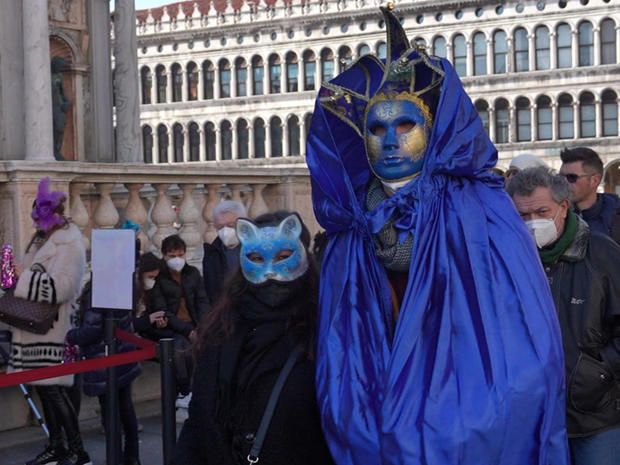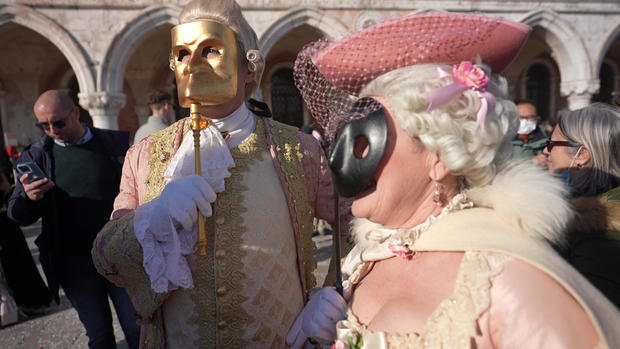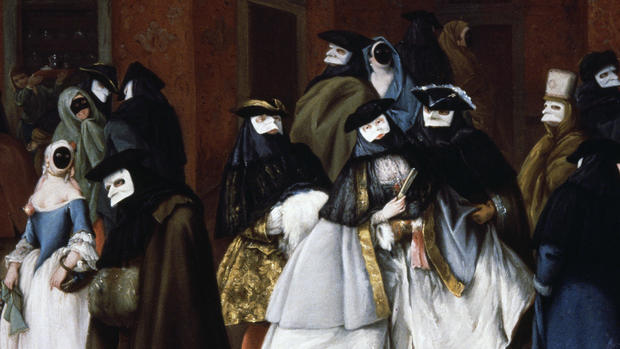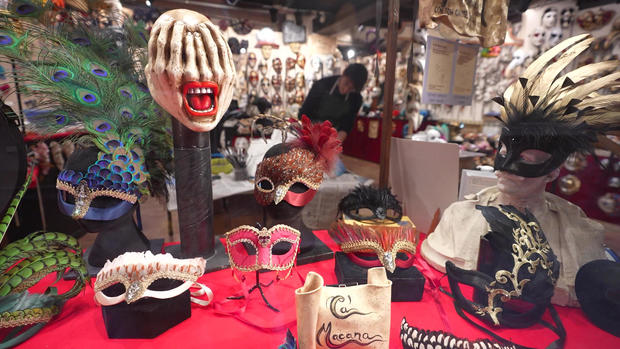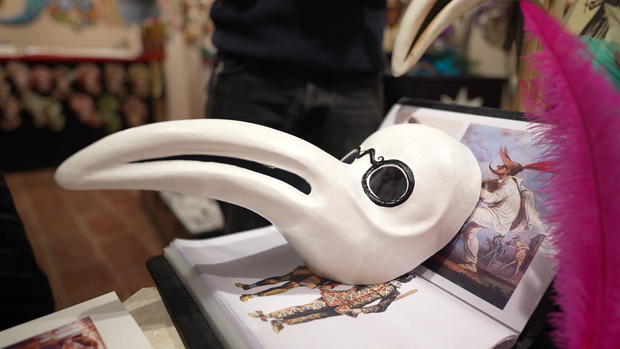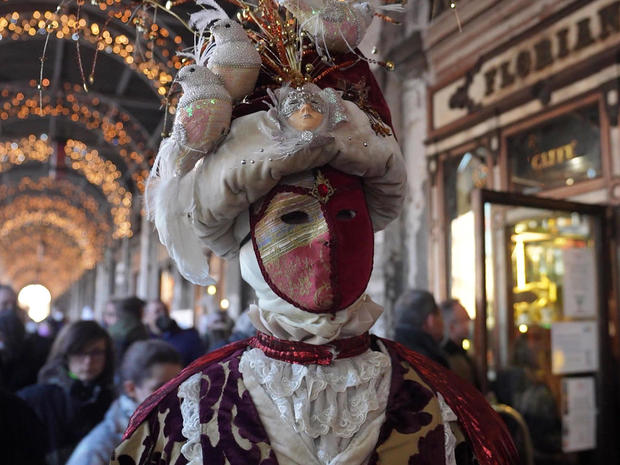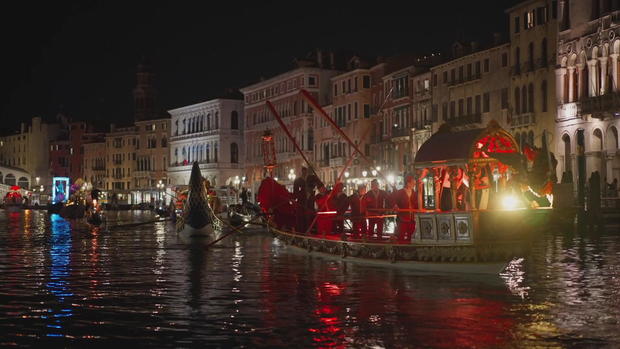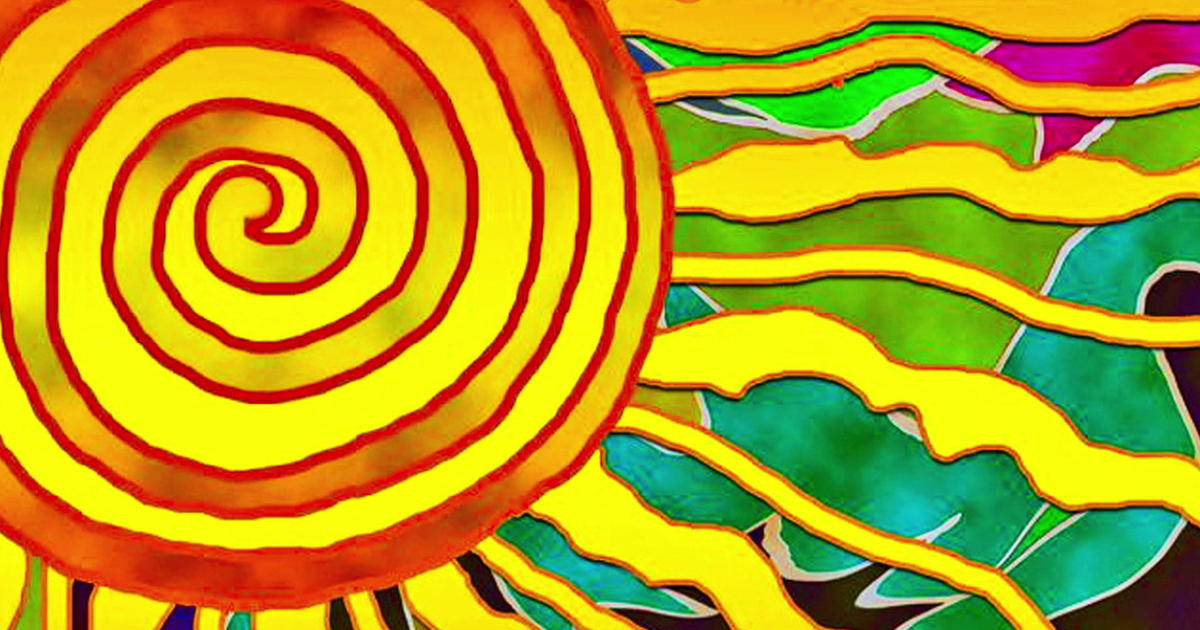The art of Venetian masks
Venice's very existence inspires wonder, and during Carnival, this city of canals provides a fanciful backdrop for the festivities leading up to Lent. Costumes, and notably masks, have added to the mystery of these celebrations for centuries, upstaging everyday uniforms, and overshadowing those pandemic face coverings that have become all-too-familiar.
When asked how she feels wearing a mask, one woman said, "It feels like going back in time. It's like living on this stage. It's marvelous!"
Their stage, on a sunny Sunday last February, is St. Mark's Square. She and her male companion said that dressing up made them feel "one-hundred-precent Venetian."
The man was wearing a traditional, historic Venetian mask, called a "Volto," while she was wearing a "Moretta." If you look at 18th century artist Pietro Longhi's paintings, you will see these masks.
Indeed, Longhi's work reveals how face coverings were a focal point of Venetian life in the 1700s, not so different from Davide Belloni's early years in the 1980s. "My childhood memories are full of masks, for sure," he told "Sunday Morning."
Belloni's parents were mask makers, and now, through their family company, Ca' Macana, he is carrying on this craft.
In Venice, said Belloni, it was traditional to wear costumes and masks not only during Carnival, but for six months of the year: "It was a common fashion to wear a mask not to be recognized. People used to go around the city to public places, café, market squares and so on wearing masks."
While it was common in the 1600s and 1700s, there are documents that mention masks going back to the Middle Ages.
Masks allowed the mixing of classes, removing divisions in the strict hierarchy of Venetian society. "Wearing a mask was a social equalizer, in a sense," said Belloni.
In their shop, Belloni showed us the Bauta costume, of which the Volto mask plays a key part in concealing identity – perfect for a night out gambling or at the theater without becoming the target of gossip.
And there are other masks with modern relevance, such as those dating to the 1500s used by doctors dealing with the plague. The eyes were glass, and the long beak was stuffed with aromatic herbs.
"This was not a 'fun' mask," said Doane.
"No, not at the beginning at least," Belloni said. "But in the last century of the Venetian Republic, in the 1700s, these became like a costume. And this was used on Mardi Gras, on the last day of Carnival, to [remind] people to go back to better behavior."
When Napoleon conquered Venice in 1797, he did away with masks due to the debauchery they allowed, never mind the security challenge they posed.
And so, for two hundred years, this tradition was almost forgotten … until the 1970s, when artisans, including Carlos Brassesco, got to work. "Masks accompanied Venetian culture practically from its origin," Brassesco told us, "and we are trying to recover some of this tradition."
"Sunday Morning" met Brassesco as he was transporting a giant bull and pigs to be used in a Carnival parade, noting, "In Venice, everything is more difficult."
The animals represent a Carnival-time gift the Venetian Republic demanded from a defeated army hundreds of years ago. Brassesco is keeping alive both this story and tradition. Each year, the parade floats down the Grand Canal.
Here, the only "mask mandate" is: the more extravagant, the better.
For more info:
- Ca' Macana mask makers, Venice
Story produced by Jon Carras and Sabina Castelfranco. Editor: Emanuel Secci.
